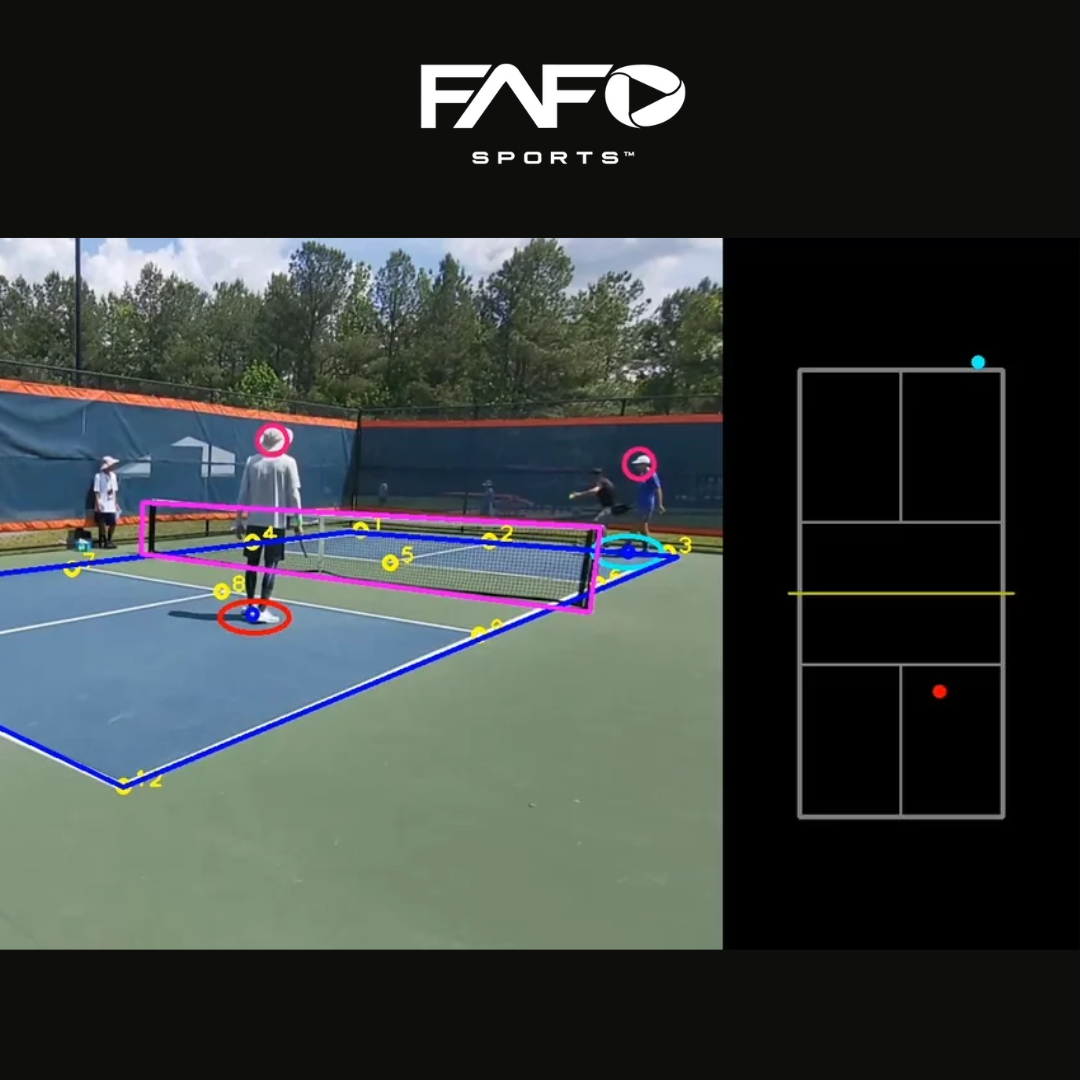
Exploring Pickleball Analytics: How Data is Changing the Game
Share
Pickleball is experiencing a data-driven revolution, and as the sport grows in popularity, so does the demand for pickleball analysis. At FAFO Sports, we recognize how cutting-edge analytics can enhance gameplay, improve strategy, and redefine training methodologies. In this article, we will delve deep into how pickleball analytics is transforming the sport and how players, coaches, and enthusiasts can leverage data to gain a competitive edge.
The Rise of Pickleball Analytics
Traditionally, pickleball has relied on player intuition and manual scoring to track performance. However, advancements in sports technology have introduced data-driven insights, allowing for in-depth pickleball analysis that breaks down every aspect of the game.

Key Metrics in Pickleball Analysis
When it comes to pickleball analytics, several key metrics help players and coaches fine-tune their strategies. These include:
- Shot Accuracy: Tracking forehand and backhand precision.
- Rally Length: Understanding endurance and point sustainability.
- Serve Efficiency: Measuring the effectiveness of first and second serves.
- Unforced Errors: Identifying patterns in mistakes to minimize them.
- Court Coverage: Assessing movement efficiency and positioning.
- Winning Patterns: Determining which strategies lead to more points.
By analyzing these data points, players can tailor their training sessions to focus on areas of improvement, enhancing their performance on the court.
Technology Driving Pickleball Analytics
The integration of wearable technology, AI, and video analysis has significantly advanced pickleball analysis. Some of the most impactful tools include:
1. Wearable Trackers and Sensors
Devices such as smart wristbands and motion sensors provide real-time data on player movements, shot speed, and reaction times. These gadgets help players identify inefficiencies in their footwork and stroke mechanics.
2. AI-Powered Video Analysis
With AI-driven video software, players can get detailed breakdowns of their matches, highlighting strengths and weaknesses. These tools can track shot placement, rally duration, and even opponent tendencies, allowing for tailored strategic adjustments.
3. Smart Paddles and Ball Tracking
The latest innovation in pickleball analytics includes smart paddles equipped with sensors to measure shot impact and ball trajectory. Additionally, high-speed cameras track ball movement, providing insights into spin rates and shot angles.
How Data is Changing Pickleball Strategy
Analytics are not just about numbers—they are about refining game strategy. Here’s how data is reshaping pickleball at various levels:
1. Personalized Training Regimens
By leveraging pickleball analytics, players can customize training sessions based on their strengths and weaknesses. For example:
- If a player has a low forehand accuracy, they can allocate more practice time to forehand drills.
- If rally endurance is lacking, they can focus on improving stamina through specific workouts.
2. Opponent Scouting and Match Preparation
Competitive players and coaches use pickleball analysis to study their opponents. By assessing shot patterns, weaknesses, and play styles, they can develop targeted game plans to exploit vulnerabilities and maximize strengths.
3. Injury Prevention and Recovery
By tracking movement patterns and exertion levels, analytics can help prevent injuries before they occur. Players can monitor overuse of certain muscles and make necessary adjustments to avoid strain or injury.
Pickleball Analytics for Different Player Levels
1. Beginners
For new players, pickleball analysis provides a clear roadmap for improvement. Basic shot accuracy tracking and court positioning insights can accelerate skill development and build confidence on the court.
2. Intermediate Players
Mid-level players can benefit from rally length analysis, serve efficiency data, and error tracking to fine-tune their technique and strategy.
3. Professional and Competitive Players
At the highest level, pickleball analytics can be the difference between winning and losing. Advanced video breakdowns, AI-generated strategic reports, and real-time match insights provide elite players with a competitive edge over their opponents.
The Future of Pickleball Analytics
As technology evolves, so will pickleball analysis. In the coming years, we can expect:
- AI-driven coaching systems that provide instant feedback during training.
- Virtual reality training simulations for immersive practice sessions.
- Machine learning algorithms that predict match outcomes based on historical data.
- More accessible and affordable analytics tools for amateur players.
At FAFO Sports, we are committed to staying at the forefront of these developments, ensuring that players at all levels can harness the power of pickleball analytics.
Conclusion
The impact of pickleball analytics on the sport is undeniable. From enhancing player performance to refining game strategies, data-driven insights are revolutionizing the way pickleball is played and coached. Whether you are a beginner looking to improve your skills or a competitive player seeking an edge, embracing analytics can elevate your game to the next level.
FAFO Sports remains dedicated to providing the latest updates, tools, and insights to help players leverage pickleball analysis effectively. Stay ahead of the game by integrating data into your training and strategy today.
Visit FAFO Sports at FAFO Sports and discover our wide range of high-quality Paddles & Paddle equipments.
